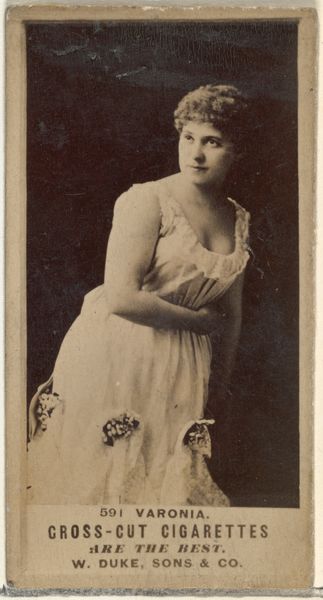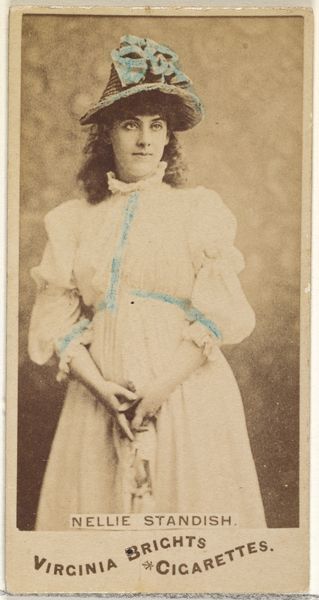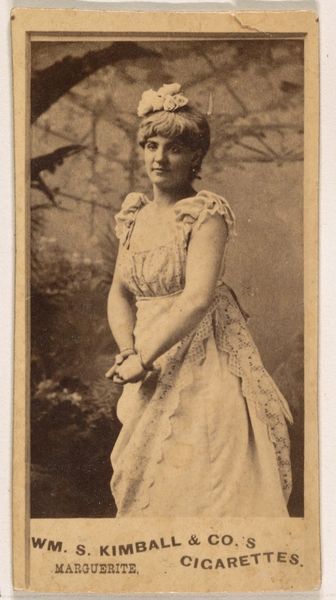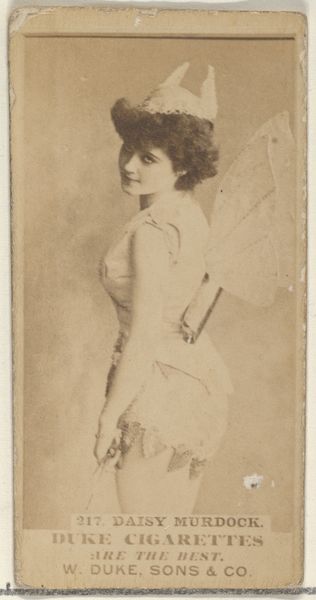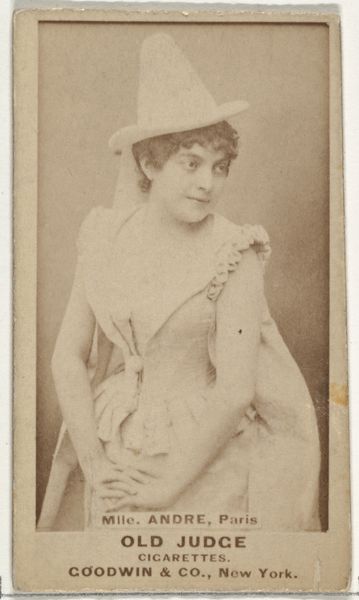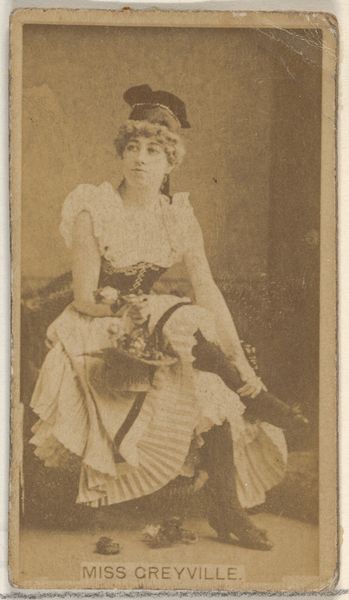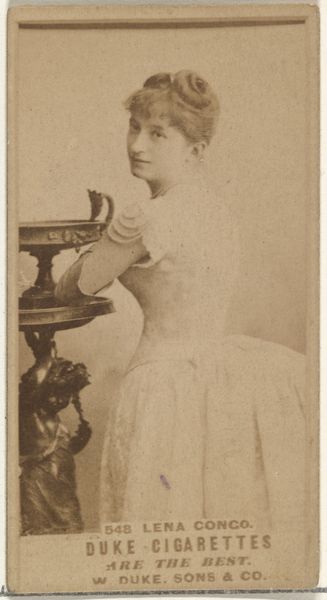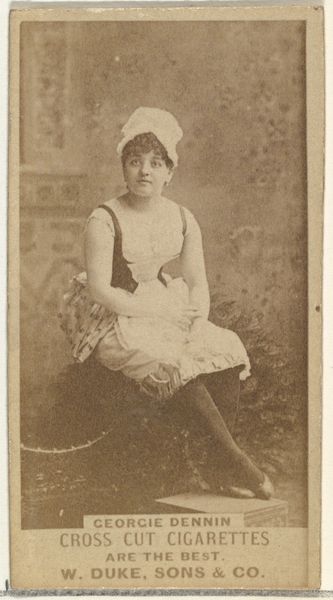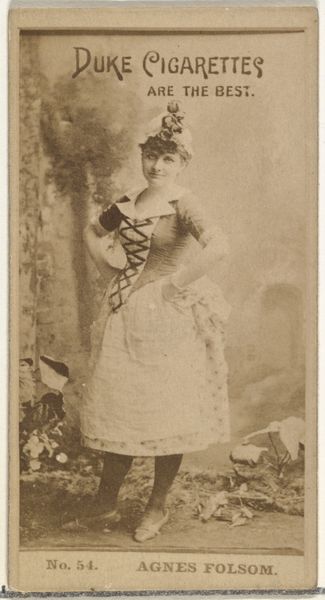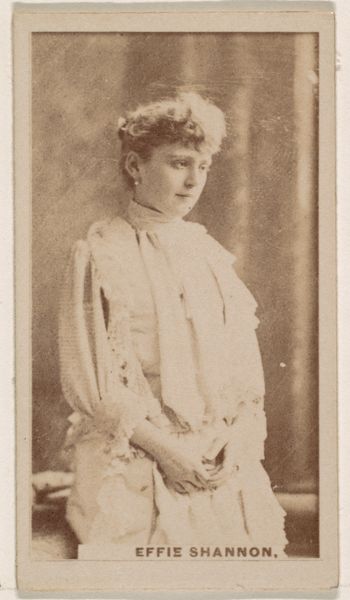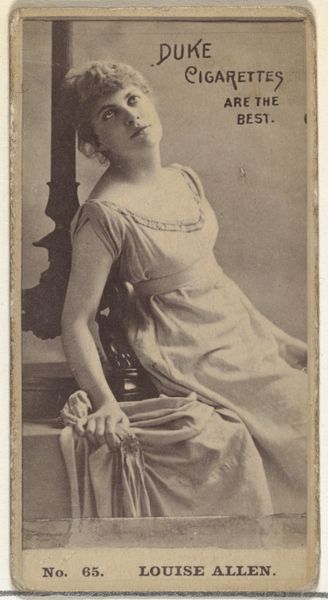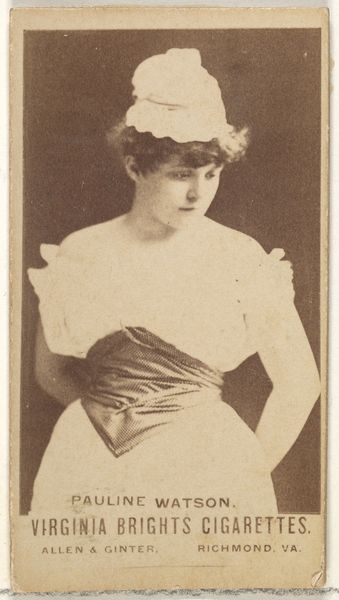
Card Number 776, Fanny Rice, from the Actors and Actresses series (N145-5) issued by Duke Sons & Co. to promote Cameo Cigarettes 1880s
0:00
0:00
drawing, graphic-art, print, c-print, photography
#
portrait
#
drawing
#
graphic-art
# print
#
c-print
#
photography
#
pencil drawing
#
coloured pencil
Dimensions: Sheet: 2 11/16 × 1 3/8 in. (6.8 × 3.5 cm)
Copyright: Public Domain
Curator: I find this image so charming, it feels like a little glimpse into a vanished world. We're looking at "Card Number 776, Fanny Rice," produced by W. Duke, Sons & Co. in the 1880s as part of a series to promote Cameo Cigarettes. It's a photographic print, essentially an advertisement featuring a portrait of a stage actress. Editor: It's striking how intimate and innocent the image feels, considering its commercial purpose. There's a dreamlike quality about her. What do you make of her bonnet, which looks a little dishevelled? Curator: The hat indeed catches the eye; she looks to be in costume, doesn't she? The lace and ribbon suggest a staged persona rather than everyday attire, perhaps linking her directly to her theatrical roles. It could allude to character archetypes she would embody on stage: The coquette? The ingénue? Symbols can have very literal meanings. Editor: Right. The visual culture of the 1880s was obsessed with stage actresses. The industry was beginning to boom with technological developments. Images of actresses blurred the lines between celebrity endorsements and cultural ideals. Cigarette cards allowed mass distribution of such images to become common. Curator: It's also interesting to consider how fleeting fame was in the pre-digital age, captured here in a momentary and manufactured photograph for commercial use. These were very common items; not at all high-art or rarefied in their own day, however there is clear intent behind the subject and medium. There are some symbolic indications of "fame". Look at the white sash, the ring on her finger. It must have had very strong meaning in her period of time. Editor: True. It highlights how consumer culture, public figures, and technological innovations shaped perceptions of women during this period, reinforcing societal values that, thankfully, are long gone. Her somewhat dreamy demeanor might signify a desirable escape into the world of theater and entertainment, for an eager audience. Curator: That is a vital reading; consumerism was quite overt as society emerged from religious orthodoxy in America and elsewhere, but this print illustrates some nuances regarding cultural memory in this historical artifact. A symbolic woman on a trending commercial product meant, ultimately, power! The ring as well as the cigarette were aspirational, desirable, emblems. Editor: It's fascinating how an object created for something as commonplace as selling cigarettes can illuminate broader shifts in societal structures and visual tastes. And seeing it displayed here offers some redemption, somehow. Curator: Indeed. Hopefully visitors come away considering this beautiful image from the Met collection beyond face value; to ask questions, and imagine this moment in time from varying angles of the past.
Comments
No comments
Be the first to comment and join the conversation on the ultimate creative platform.

